In the world of clean and sustainable transportation, there’s a whole bunch of confusing terms and abbreviations. One of the most frequently heard is “Zero-Emission Vehicle” (or “ZEV” for short).
“What does zero emission vehicle mean?” you might ask. “What makes them zero-emissions?” “Zero-emissions of what, exactly?” And “zero-emissions from production to operation, or just operation?”.
In this blog post I will answer all of those questions and more, by explaining clearly the definition and meaning of a Zero Emission Vehicle, or ZEV.
Short ZEV Definition Summary
- Zero Emission Vehicles (ZEVs) have zero air-polluting tailpipe emissions when in operation.
- ZEVs also have zero greenhouse-gas tailpipe emissions when in operation.
- ZEVs are included in the Low Emission Vehicle (LEV) category.
- The ZEV definition is not constrained to any specific technology.
- Zero Emission Vehicles are currently Battery Electric Vehicles, (BEVs) and Fuel Cell Vehicles (FCVs).
- The term “Zero Emission Vehicle” was coined by the California Air Resources Board (CARB) as part of its first Low Emission Vehicle regulation in 1990, and refers strictly to cars and trucks.
- In a broader sense, a Zero Emission Vehicle could include any form of transport that produces zero operating emissions, such as electric motorcycles, electric bicycles, electric kick scooters, and other personal mobility devices.

Understanding Zero Emission Vehicles
Zero-emission vehicles are a breath of fresh air in the world of transportation (pun intended). Unlike conventional vehicles that run on gasoline or diesel and emit harmful exhaust gases, ZEVs produce no direct emissions during operation.
To classify as zero-emission vehicles, their on-board power source must use a technology that is completely emissions-free at the point of vehicle operation.
Furthermore, the vehicle must be emissions free during all possible modes of operation and under any conditions.
Examples of vehicles that comply with the zero-emissions criteria include battery electric vehicles (BEVs) and hydrogen fuel cell vehicles (FCVs).
The California Air Resources Board introduced the Zero-Emission Vehicle program (in 1990) to promote the adoption of ZEVs and achieve long-term emission reduction goals.
The ZEV program is a requirement for large automakers to meet a target number of ZEV car sales (measured as a percentage of total sales). ZEVs are seen as critical in California to improve air quality and reduce the state’s impact on climate change.

Vehicles and transportation fuels are the primary sources of carbon emissions in California, as well as most other places, making a transition to zero-emission vehicles essential for a sustainable future.
Types of Zero Emission Vehicles (Strict CARB Definition)
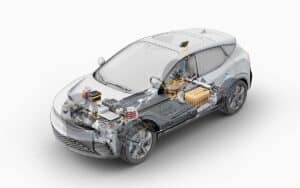
Electric cars
Battery electric vehicles (BEVs) operate solely on electricity stored in a battery, to power an electric motor.
These vehicles can charge at home or at public charging stations, making them a convenient choice for environmentally conscious drivers.
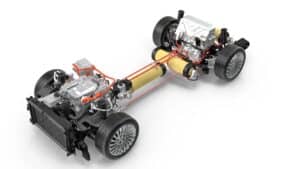
Hydrogen cars
Hydrogen fuel cell vehicles (FCVs) generate electricity through a chemical reaction between hydrogen and oxygen, producing only water as a byproduct.
This electricity is then used to power an electric motor.
Other Emerging Technologies
There are other technologies being developed for use in ZEVs, such as solar power.
The impact of these unproven methods is unknown, but the gamut of technologies sold in the ZEV marketplace will almost certainly broaden, and is an exciting area of innovation.
Types of Zero Emission Vehicles (Broader Definition)

Bicycles (e-bikes)
Bicycles, including e-bikes, are an often overlooked example of zero-emission vehicles that can play a significant role in reducing emissions.
E-bikes have become increasingly popular as a form of alternative transportation, combining the convenience of bicycles with the ease and efficiency of electric power.
These bikes come equipped with small batteries and electric motors that give riders an extra boost when pedaling or even allow for full electric operation.

Motorbikes And Scooters (e-Motorbikes)
e-Motorbikes and scooters are becoming increasingly popular modes of transportation. They are powered by rechargeable batteries, producing zero exhaust gas emissions.
Most manufacturers offer efficient models that can easily compete with their fossil-fueled counterparts in terms of speed, range per charge (with some electric motorcycles boasting over 200 miles), and torque delivery.

Personal Mobility (e-scooters, Segways Etc.)
Personal mobility devices such as e-scooters and Segways are becoming increasingly popular in urban areas as a means of transportation. These vehicles are electrically powered, emitting zero exhaust gases or pollutants, making them an eco-friendly option for short journeys.
They’re also relatively affordable and convenient to use, with many companies offering rental services through smartphone apps.
Environmental Benefits Of ZEVs
Zero-emission vehicles provide a host of environmental benefits, including a substantial decrease in air pollution and greenhouse gas emissions.
Since ZEVs do not produce any exhaust fumes, they contribute far less to air pollution than conventional vehicles. Moreover, they do not emit greenhouse gases, which are a major factor in global warming.
Well To Wheel Emissions Comparison (ZEVs Vs. Gas-Powered Vehicles)
It is essential to note that the electricity used to power electric vehicles may generate carbon pollution, just as the production of hydrogen for fuel cell vehicles may.
This will depend on the source of electricity. For instance, electricity produced from coal-fired power plants will result in higher carbon emissions than electricity generated from renewable sources such as solar panels or wind turbines.
When it comes to well-to-wheel greenhouse gas emissions, which take into account both the operation of the vehicle and the emissions associated with the fuel source, electric vehicles come out ahead of their conventional counterparts, and hydrogen fuel cell vehicles represent significant reductions in total energy use.
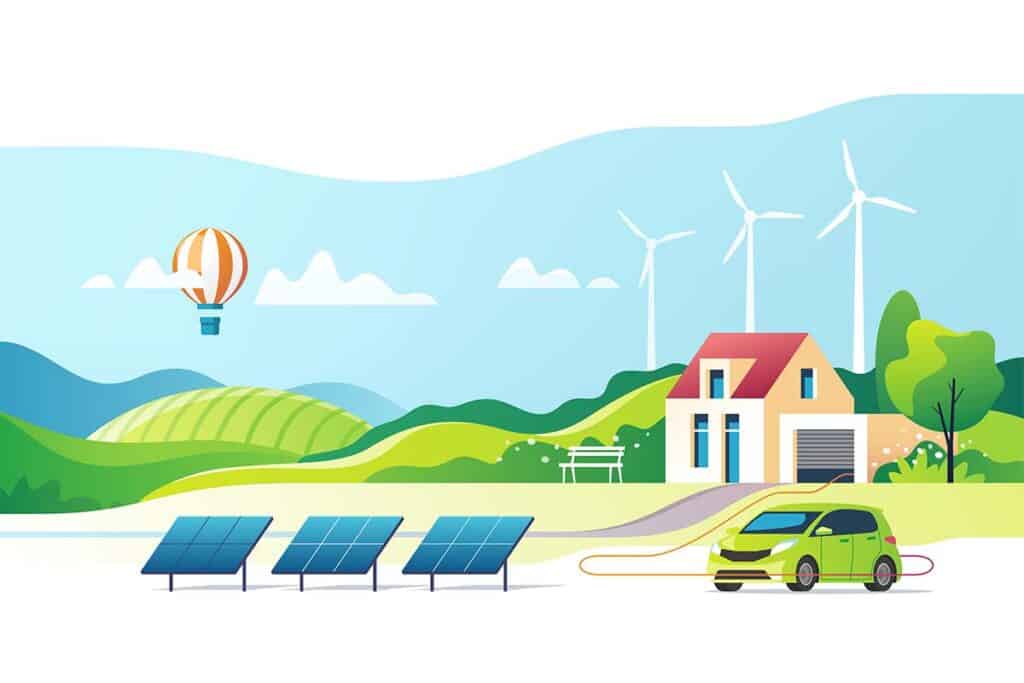
Battery Electric Vehicle Production Emissions
The production of electric vehicles requires the mining and heating of various minerals in the battery production process, which can produce approximately 80% more emissions compared to a gas-powered car
Nevertheless, even taking increased manufacturing emissions into account, the overall environmental impact of electric vehicles is significantly lower than that of conventional vehicles, when taking into account the lifetime usage of the vehicle.
With lower emissions and higher energy efficiency, both electric vehicles and hydrogen fuel cell vehicles are a smart choice for the environmentally conscious driver.
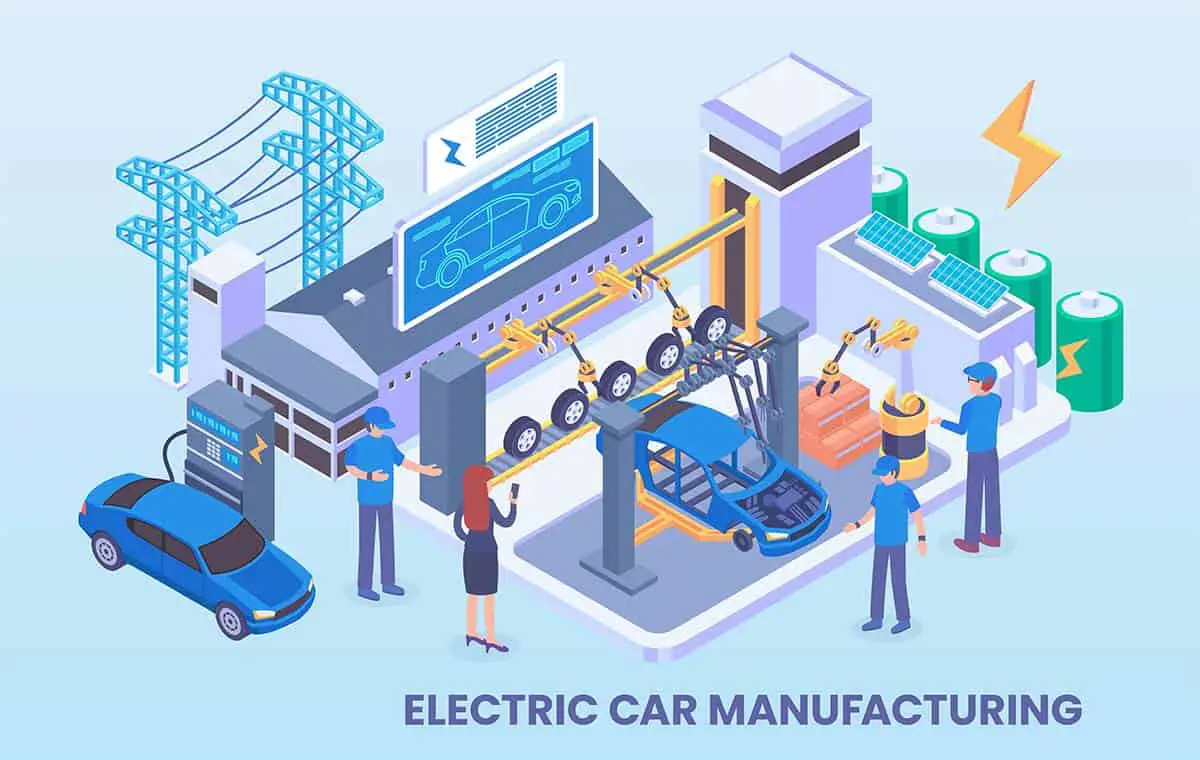
Battery Technology in Zero Emission Vehicles
Lithium-ion (Li-ion) battery technology is a game-changer in the realm of electric vehicles. These batteries store energy and power the vehicle.
Recent advancements in Li-ion battery technology have led to significant improvements in the range and performance of electric vehicles, further solidifying their place in the future of transportation.
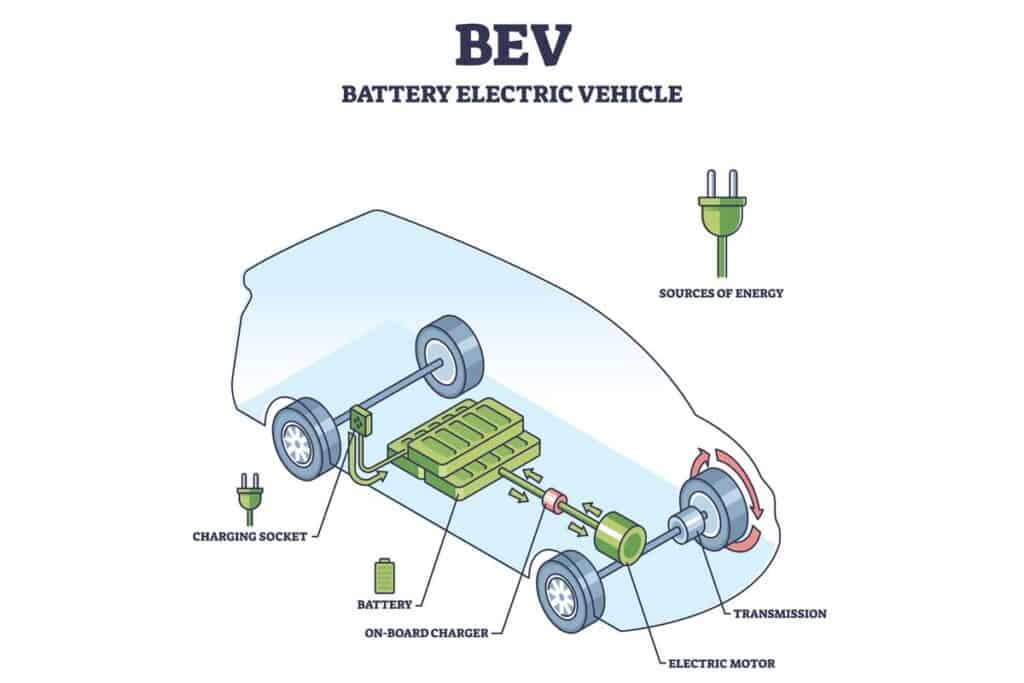
Advancements in Battery Technology
Significant progress has been made in battery technology, including the development of novel battery chemistries such as solid-state electrolytes, lithium-sulfur, and sodium-ion batteries. These advancements have resulted in improvements in energy density and charging time, making electric vehicles more practical for everyday use.
Researchers are also working on creating successive generations of Li-ion batteries with a wider range of materials, further enhancing their performance and efficiency as well as reducing dependency on over-exploited minerals.
As battery technology continues to advance, the future of electric vehicles becomes even more promising, with extended ranges and faster charging times on the horizon.
Hydrogen Fuel Cell Technology in Zero Emission Vehicles
Fuel cell technology is another innovative approach to powering zero-emission vehicles. Hydrogen fuel cell vehicles utilize hydrogen and oxygen in an electrochemical reaction to generate electricity and water.
Hydrogen fuel cell vehicles produce no harmful emissions during operation, only generating water and heat as byproducts.

The fuel cell process in these vehicles generates electricity without degrading cell components due to mechanical stress. This ensures a longer lifespan and reliable performance.
California’s ZEV Mandate
California’s Zero Emission Vehicle (ZEV) mandate is an innovative policy introduced by the California Air Resources Board (CARB) as part of their Advanced Clean Cars program.
The primary goal of this regulation is to reduce harmful emissions from vehicles and promote the widespread adoption of zero-emission cars across the state.
Under this system, automakers are required to earn a certain number of “ZEV credits” based on their overall sales of ZEVs such as Battery Electric Vehicles (BEVs) or Fuel Cell Electric Vehicles (FCEVs) within California.
The most recent update to California’s ZEV mandate was the requirement for automakers to meet 100% ZEV sales by 2035.
This mandate has also been taken up by a number of other states representing about 36% of the U.S. auto-making capacity, meaning that it’s possible that we will see the end of gas-powered car production in 2035.

Government Policies and Incentives for Zero Emission Vehicles
Government policies and incentives in the car manufacturing industry play a crucial role in encouraging the adoption of zero-emission vehicles.
The Zero-Emission Vehicle (ZEV) program in California, and its subsequent adoption by numerous states, has been fundamental in promoting the growth of the electric vehicle market.
Financial incentives are also available for zero-emission vehicle owners, including tax credits, rebates, vouchers, and subsidies.

Financial Incentives
Financial incentives for zero-emission vehicles can come in various forms, such as tax credits, rebates, vouchers, and subsidies.
These incentives, help offset the initial purchase price of a ZEV and make them a more attractive and affordable option for potential buyers.
The amount of financial incentives available varies depending on the type of vehicle and the specific program, with incentives ranging from a few hundred dollars to tens of thousands of dollars.
Access to these financial incentives is facilitated through federal and state governments, as well as other organizations.
By taking advantage of these incentives, consumers can enjoy the benefits of zero-emission vehicles while also contributing to a cleaner, more sustainable future.
Comparing Zero Emission Vehicles with Conventional Vehicles
When comparing zero-emission vehicles to conventional vehicles, it’s important to consider performance, range, and total cost of ownership.
The total cost of ownership for zero-emission vehicles is generally lower than that of conventional vehicles, thanks to reduced fuel and maintenance costs.

Performance and Range
The range of electric vehicles falls somewhere between 100 and 350 miles, depending on battery capacity which varies greatly between models. Hydrogen fuel cell cars run for 300 to 400 miles and can be refilled as quickly as a gas-powered car.
With these kind of ranges it’s evident that these vehicles are capable of meeting the needs of many drivers, providing a viable alternative to conventional vehicles.
While the range of electric vehicles may vary, advancements in battery and fuel cell technology continue to improve their performance and range.
Furthermore, as the charging network expands, battery recharging times will reduce, creating an ever more favorable situation for the uptake of ZEVs.

Total Cost of Ownership
The total cost of ownership (TCO) for zero-emission vehicles encompasses factors such as the initial purchase price, maintenance costs, fuel costs, financing costs, depreciation, registration, and insurance.
While the initial purchase price of electric vehicles may be higher than that of conventional vehicles, lower fuel and maintenance costs often result in a lower overall TCO.
Fuel cell vehicles are forecast to be cheaper to run than both battery electric vehicles and gas-powered vehicles within ten years.
In addition to lower operating costs, the financial incentives offered by governments and organizations, potentially further reduce the total cost of ownership of a ZEV.
As a result, zero-emission vehicles are becoming an increasingly attractive option for drivers in comparison to traditional gas-powered cars.
Summary
In conclusion, zero-emission vehicles were conceived by the state of California as a requirement for large automakers with the ultimate goal of reducing air pollution and greenhouse gas emissions.
ZEVs offer an eco-friendly and efficient alternative to conventional vehicles.
With advancements in battery technology, fuel cell technology, and charging infrastructure, these vehicles are becoming more accessible and practical for the average consumer.
Government policies and incentives further support the adoption of zero-emission vehicles, making it easier for consumers to make the switch.
Frequently Asked Questions
What types of cars qualify as a zero emission vehicle?
Yes, zero emission vehicles exist and are typically categorized as electric cars and hydrogen fuel cell cars. These cars produce no tailpipe emissions and have the potential to reduce air pollution and greenhouse gas emissions significantly.
Electric cars are powered by electricity stored in a battery and are recharged by plugging into an electric power source. Hydrogen fuel cell cars use hydrogen gas to power an electric motor and produce no emissions other than water vapor.
What does zero emissions mean for cars?
Zero emissions for cars means that they are powered by a propulsion technology that emits no pollutants or greenhouse gasses into the atmosphere during their operation.
Do zero-emission vehicles use gas?
No, zero-emission vehicles do not use gas. These vehicles are most commonly powered by electricity and must be plugged in to charge the battery. Alternatively, they can run on Hydrogen gas.
Why zero-emission vehicles are better?
Zero-emission vehicles are far better for the environment than traditional gasoline and diesel cars because they do not produce any tailpipe exhaust, helping to reduce smog-forming pollutants and greenhouse gas (GHG) production.
This will lead to cleaner air and less acid rain, avoiding millions of tons of harmful emissions annually.
Are Partial Zero Emission Vehicles A Type Of ZEV?
No, Partial Zero Emission vehicles (PZEVs) are a special type of gas-powered car that emits no air pollution, but that does emit greenhouse gases because it runs on an internal combustion engine.
- Tesla Charger Installation Cost (Home Setups) - March 1, 2024
- Tesla Phone Key Disconnected (Troubleshooting Guide and Quick Fixes) - March 1, 2024
- Tesla FSD 12 (Explained) - March 1, 2024